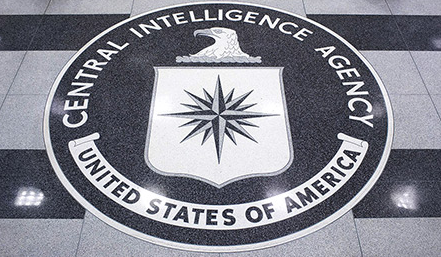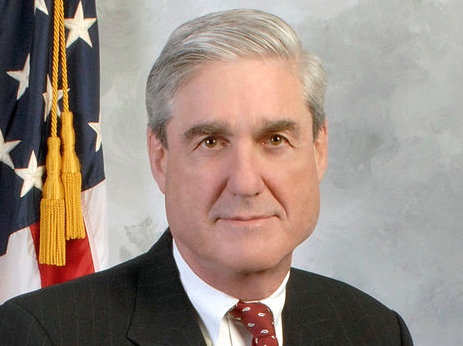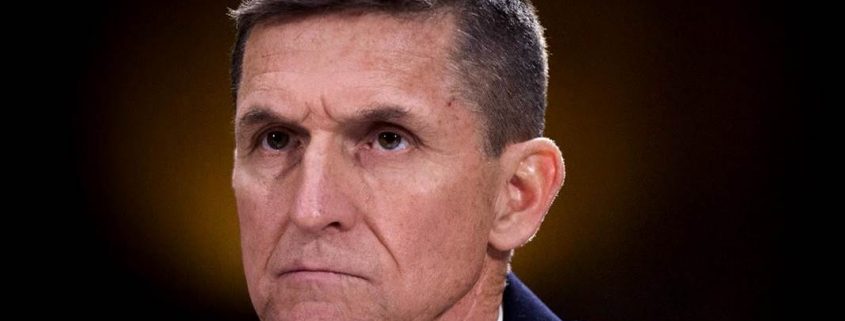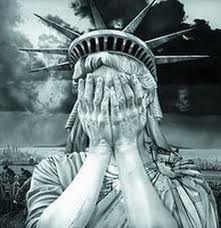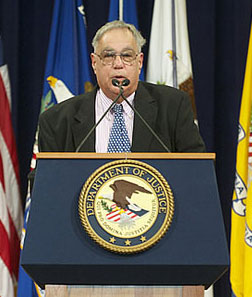 David Margolis was a living legend and giant at the Department of Justice. Now he has passed. Just posted is the following from DOJ:
David Margolis was a living legend and giant at the Department of Justice. Now he has passed. Just posted is the following from DOJ:
Statements From Attorney General Loretta E. Lynch and Deputy Attorney General Sally Q. Yates on the Passing of Associate Deputy Attorney General David Margolis
Attorney General Loretta E. Lynch and Deputy Attorney General Sally Q. Yates released the following statements today on the passing of Associate Deputy Attorney General David Margolis, senior-most career employee at the Department of Justice.
Statement by Attorney General Lynch:
“David Margolis was a dedicated law enforcement officer and a consummate public servant who served the Department of Justice – and the American people – with unmatched devotion, remarkable skill and evident pride for more than half a century. From his earliest days as a hard-charging young prosecutor with a singular sense of style to his long tenure as one of the department’s senior leaders, David took on our nation’s most pressing issues and navigated our government’s most complex challenges. To generations of Justice Department employees, he was a respected colleague, a trusted advisor and most importantly, a beloved friend. We are heartbroken at his loss and he will be deeply missed. My thoughts and prayers are with David’s family, his friends and all who loved him.”
Statement by Deputy Attorney General Yates:
“David Margolis was the personification of all that is good about the Department of Justice. His dedication to our mission knew no bounds, and his judgment, wisdom and tenacity made him the “go-to” guy for department leaders for over 50 years. David was a good and loyal friend to all of us, and his loss leaves a gaping hole in the department and in our hearts.”
I am sure Mr. Margolis was a kind, personable and decent chap to those who knew and worked with him. I can be sure because there have been many voices I know who have related exactly that. He was undoubtedly a good family man and pillar of his community. None of that is hard to believe, indeed, it is easy to believe.
Sally Yates is spot on when she says Margolis’ “dedication to our [DOJ] mission knew no bounds”. That is not necessarily in a good way though, and Margolis was far from the the “personification of all that is good about the Department of Justice”. Mr. Margolis may have been such internally at the Department, but it is far less than clear he is really all that to the public and citizenry the Department is designed to serve. Indeed there is a pretty long record Mr. Margolis consistently not only frustrated accountability for DOJ malfeasance, but was the hand which guided and ingrained the craven protection of any and all DOJ attorneys for accountability, no matter how deeply they defiled the arc of justice.
This is no small matter. When DOJ Inspectors General go to Congress to decry the fact that there is an internal protection racket within the Department of Justice shielding even the worst wrongs by Department attorneys, as IG Glen Fine did:
Second, the current limitation on the DOJ OIG’s jurisdiction prevents the OIG – which by statute operates independent of the agency – from investigating an entire class of misconduct allegations involving DOJ attorneys’ actions, and instead assigns this responsibility to OPR, which is not statutorily independent and reports directly to the Attorney General and the Deputy Attorney General. In effect, the limitation on the OIG’s jurisdiction creates a conflict of interest and contravenes the rationale for establishing independent Inspectors General throughout the government. It also permits an Attorney General to assign an investigation raising questions about his conduct or the conduct of his senior staff to OPR, an entity reporting to and supervised by the Attorney General and Deputy Attorney General and lacking the insulation and independence guaranteed by the IG Act.
This concern is not merely hypothetical. Recently, the Attorney General directed OPR to investigate aspects of the removal of U.S. Attorneys. In essence, the Attorney General assigned OPR – an entity that does not have statutory independence and reports directly to the Deputy Attorney General and Attorney General – to investigate a matter involving the Attorney General’s and the Deputy Attorney General’s conduct. The IG Act created OIGs to avoid this type of conflict of interest. It created statutorily independent offices to investigate allegations of misconduct throughout the entire agency, including actions of agency leaders. All other federal agencies operate this way, and the DOJ should also.
Third, while the OIG operates transparently, OPR does not. The OIG publicly releases its reports on matters of public interest, with the facts and analysis underlying our conclusions available for review. In contrast, OPR operates in secret. Its reports, even when they examine matters of significant public interest, are not publicly released.
Said fact and heinous lack of accountability for Justice Department attorneys, not just in Washington, but across the country and territories, is largely because of, and jealously ingrained by, David Margolis. What Glen Fine was testifying about is the fact there is no independent regulation and accountability for DOJ attorneys.
They are generally excluded from the Department IG purview of authority, and it is rare, if ever, courts or state bar authorities will formally review DOJ attorneys without going throughout the filter of the OPR – the Office of Professional Responsibility – within the Department. A protection racket designed and jealously guarded for decades by David Margolis. Even when cases were found egregious enough to be referred out of OPR, they went to…..David Margolis.
In fact, attuned people literally called the OPR the “Roach Motel”:
“I used to call it the Roach Motel of the Justice Department,” says Fordham University law professor Bruce A. Green, a former federal prosecutor and ethics committee co-chair for the ABA Criminal Justice Section. “Cases check in, but they don’t check out.”
If you want a solid history of OPR, and the malfeasance it and Margolis have cravenly protected going back well over a decade, please go read “The Roach Motel”, a 2009 article in no less an authority than the American Bar Association Journal. It is a stunning and damning report. It is hard to describe just how much this one man, David Margolis, has frustrated public transparency and accountability into the Justice Department that supposedly works for the citizens of the United States. It is astounding really.
As I wrote back in 2010:
But just as there is an inherent conflict in the DOJ’s use of the fiction of the OPR to police itself, so too does David Margolis have issues giving the distinct appearance of impropriety. Who and what is David Margolis? A definitive look at the man was made by the National Law Journal (subscription required):
“Taking him on is a losing battle,” says the source. “The guy is Yoda. Nobody fucks with the guy.”
….
Margolis cut his teeth as an organized-crime prosecutor, and he often uses mob analogies in talking about his career at the Justice Department. When asked by an incoming attorney general what his job duties entailed, Margolis responded: “I’m the department’s cleaner. I clean up messes.”
The analogy calls to mind the character of Winston Wolfe, played by Harvey Keitel in the 1994 film “Pulp Fiction.” In the movie, Wolfe is called in by mob honchos to dispose of the evidence after two foot soldiers accidentally kill a murder witness in the back of their car.
“The Cleaner” Mr. Margolis considered himself, while fastidiously sanitizing gross malfeasance and misconduct by DOJ attorneys, all the while denying the American public the disinfectant of sunshine and transparency they deserve from their public servants (good discussion by Marcy, also from 2010).
Perhaps no single incident epitomized Margolis’ determination to be the “cleaner” for the Department of Justice and keep their dirt from public scrutiny and accountability than the case of John Yoo (and to similar extent, now lifetime federal judge Jay Bybee). Yoo as you may recall was the enlightened American who formally opinedcrushing innocent children’s testicles would be acceptable conduct for the United States to engage in. Yoo and Bybee, by their gross adoption of torture, literally personally soiled the reputation of the United States as detrimentally as any men in history.
So, what did David Margolis do in response to the heinous legal banality of evil John Yoo and Jay Bybee engendered in our name? Margolis cleaned it up. He sanitized it. Rationalized it. Ratified it. Hid it. To such an extent architects of such heinous war crimes are now lifetime appointed federal judges and tenured professors. Because that is what “The Cleaner” David Margolis did. “Protecting” the DOJ from accountability, at all costs, even from crimes against humanity, was simply the life goal of David Margolis, and he was depressingly successful at it.
So, less than 24 hours in to the passing of The Cleaner, is it too early to engage in this criticism? Clearly other career officials at the DOJ think discussing the pernicious effects of Margolis on accountability and transparency are out of bounds.
I wonder what the late Senator Ted Stevens would say in response to the “too soon” mandate of Steven Bressler? Because thanks to the efforts of The Cleaner Margolis, Stevens died without the public knowing what an unethical and craven, if not downright criminal, witch hunt attorneys in the Department of Justice ran on him. Even after Stevens was long gone from office and dead, there was Margolis “cleaning” it all up to protect his precious Justice Department when even the internal OPR found gross misconduct:
Following the Justice Department’s agreement in 2009 to vacate the convictions it obtained of former Alaska Senator Ted Stevens, it conducted an internal probe into the conduct of its senior lawyers and—surprise!—exonerated them and itself. It then refused to make the report public. However, at the time the conviction was voided, the presiding judge in Stevens’s case, Emmet Sullivan, appropriately wary of the department’s ethics office, appointed a special prosecutor, Henry F. Schuelke, III, an eminent Washington attorney and former prosecutor, to probe the DOJ’s conduct. Late last week, Schuelke’s 525-page report was released, over the loud objections of DOJ lawyers. The report revealed gross misconduct by the prosecutorial team, stretching over the entire course of the case and reaching into the upper echelons of the department. It concluded there had been “systematic concealment of significant exculpatory evidence which would have independently corroborated [Stevens’s] defense.”
Having laid out the above bill of particulars as to David Margolis, I’d like to return to where we started. As I said in the intro, “I am sure Mr. Margolis was a kind, personable and decent chap”. That was not cheap rhetoric, from all I can discern, both from reading accounts and talking to people who knew Mr. Margolis well, he was exactly that. Ellen Nakashima did a fantastic review of Margolis in the Washington Post last year. And, let’s be honest, the man she described is a guy you would love to know, work with and be around. I know I would. David Margolis was a man dedicated. And an incredibly significant man, even if few in the public understood it.
Say what you will, but Mr. Margolis was truly a giant. While I have no issue delineating what appear to be quite pernicious effects of David Margolis’ gargantuan footprint on the lack of accountability of the Department of Justice to the American citizenry, I have some real abiding respect for what, and who, he was as a man. Seriously, read the Nakashima article and tell me David Margolis is not a man you would love to kill some serious beers with by a peaceful lake somewhere.
But David Margolis, both the good and the bad, is gone now. Where will his legacy live? One of our very longtime friends here at Emptywheel, Avattoir, eruditely said just yesterday:
Focus instead on the institution, not the players. The players are just data points, hopefully leading to greater understanding of the institutional realities.
Those words were literally the first I thought of yesterday when I received the phone call David Margolis had passed. They are true and important words that I, and all, need to take heed of more frequently.
David Margolis, it turns out from all appearances and reports, was a complex man. Clearly great, and clearly detrimental, edges to him. So what will his legacy be at the Department of Justice? Will the closing of the Margolis era, and it was truly that, finally bring the institution of the Department into a modern and appropriate light of transparency, accountability and sunshine?
Or will the dirty deeds of David Margolis’ historical ratification and concealment of pervasive and gross misconduct by Department of Justice attorneys become permanently enshrined as a living legacy to the man?
We shall see.


